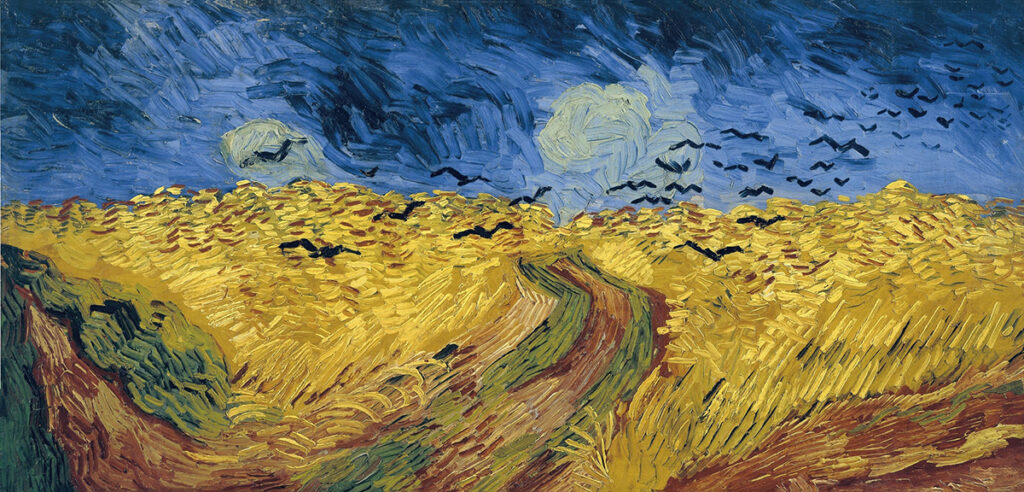Volcanoes are erupting in The Philippines, but on-fire Australia received some welcome rain. The Iran war cries have been called off and The Donald’s military powers are about to be hamstrung by the Senate. Meanwhile, his impeachment trial is starting, and we’re all on Twitter for a front-row seat.
Did technology kill the craftsman?
Why we should keep making meaningful work amid the speed and convenience of technology
Cars are faster than horses, text messages are faster than courier-delivered handwritten letters, and social media spreads new music faster than a two-year tour across Europe. Technology has made the desires of man unimaginably more attainable and at a much faster speed. This is especially pronounced in the creative industry: artificial intelligence can generate “paintings” in seconds and GPT can “write” essays at the snap of your fingers.
Technology has not only shortened the time it takes to produce these works, but also shortened the lifespan and diminished the significance of what it means to create. Artworks are mass-produced and go out of style every few years. Pop songs, which typically do not run over four minutes, consist of the same few chords plus mainstream lyrics about similar subjects such as debauchery, money, or heartbreak. Glass condominiums are built, destroyed, and rebuilt every now and then for the sole purpose of commercialization.
Things are fast, industrialized, convenient, disposable, unsentimental, and productized, with no intention to last. Culture has reacted to technology with shortened attention spans and lower commitment to craftsmanship: This is what I call the death of the craftsman. Why bother getting your hands dirty in the tedium of craft when machines offer the exact shortcuts you’re looking for? Why bother making things timeless when they’re so easy to replace?
But faster doesn’t always mean better.
Meaningfulness is the price of expediency. Ironically, the word technology comes from two Greek words: techne and -logia (logos). Techne means art, skill, craft, or the way by which a thing is gained. Logos means word, the utterance by which inward thought is expressed and given explanation. And so, technology in its truest and most original sense means craft that has been given meaning. It is knowledge given a purpose. It is turning what’s theoretical into what’s practical. It’s the process in which we breathe human significance into art, skill, craft, or ability.
Technology in its truest and most original sense means craft that has been given meaning. It is knowledge given a purpose.
To create is to reveal what only you can see to everyone else, using yourself as an instrument to deliver beauty out of what’s in front of all of us. To create is to bring forth something from nothing and to have something exist because of you. That’s why the significance of supporting craftsmanship is more than just paying a person for their handmade goods (as opposed to a machine). It’s about preserving culture and forming emotional connections with the materials we use. Being aware that sometime, somewhere, the chair we sit on or the mug we drink from was created by someone who gave their whole attention to it makes us connect with the artistry at a spiritual level.
Today, there are too many grifters and too few craftsmen. There are content creators, pop stars, and viral stunt artists, but very few produce truly timeless pieces of work that are labors of love and intended to outlive the creator. Modern artists take shortcuts; few embrace the difficulty of skill. Few are willing to invest their time and genuine interest in something that demands discipline. Few seem to have the patience and discipline required to produce good work that matters. One can argue that technology isn’t all harmful for art, as Michelangelo likely used a chisel when carving the David; but, there is an obvious point in which the convenience of technology starts hurting the sacredness of creation and replacing the beauty in art with nothing but hollow sensation. Technology starts becoming harmful when it is no longer facilitating the intrinsic purpose of art as a tool but utilizing art as a means to an end—whether that be for clout or profit.
Cristóbal Balenciaga, for example, is considered a true craftsman. He discovered his passion for couture at the age of three and made his first piece of clothing, a jacket for his cat, when he was six. He then went on to sew superbly, creating a piece a day, every single day, for the next 74 years. This relentless consistency kept his skills sharp. From choosing materials to cutting and sewing, Balenciaga did everything by himself and was involved in every step of a dress’s creation. His contemporaries Christian Dior and Coco Chanel referred to him as “the master of us all,” and “a couturier in the truest sense of the word . . . capable of cutting material, assembling a creation, and sewing it by hand,” respectively. For Balenciaga, clothes were his religion. The mass-market fast fashion copycats of today are no match.
We are all alchemists at heart: to create is to transform what we are given into something of significance.
Over-technologized modern craft has lost the original purpose of art and creation, which is to inspire and communicate in a way that transcends languages, time, culture, and geography. Art is a portal into which mortal lives can peer to catch a glimpse of the eternal. This is why good art—or, beauty, in the rawest sense—terrifies us: It’s the feeling of chills running down your spine when the choir harmonizes at the end of a Bach Choral. Beauty is not a product of cerebral reasoning. Rather, it’s a primal reaction. Things aren’t beautiful because we have judged them to be; we perceive things as such because beauty happens. People can lie about how hard they worked on something, but quality cannot be faked. Sir Henry Royce, cofounder of Rolls Royce, claimed that he invented nothing new, he simply took every part of the car and made it as great as possible: “Strive for perfection in everything you do. Take the best that exists and make it better.”
Skill and time are what make craftsmanship insurmountably valuable. There’s no doubt about the precision and diversity of what today’s technology can produce, from carving wood to manufacturing dolls to building sportscars, yet there’s an unspoken favoritism we have for handmade goods.
For example, a handmade birthday present feels much more precious than something that was store bought. A cake from the patisserie is much more cherished than something from the baked goods aisle of a generic grocery store that has been stocked with factory-made foods. Even if they cost the same and look alike, the one that came from a person’s toil holds more weight. People may forget what you gave them, but they’ll never forget how your gift made them feel. A handmade gift makes the occasion a lot more special because it is a statement about how someone cared about you so much that they spent time and invested their handy skills into the creation of something for you instead of taking the shortcut of buying a mass-produced version of it.

Along with emotions, context is perhaps the single facet about creation that technology can never mimic. The above painting, Wheatfield with Crows, is the last piece that Vincent van Gogh ever completed. While it is not as mass-printed and popularized as The Starry Night or the Sunflowers series, the gravity of this painting is arguably much greater than anything else he has ever worked on, because this was the wheatfield van Gogh killed himself in shortly after the completion of the painting. The crows refer to the letter he had written a decade earlier, in which he compared himself to a caged bird. The significance and the meaning of this piece come from the lived experience of the artist himself, and this kind of context is what AI-generated art cannot produce.
You see evidence of this today as well: If you visit a contemporary art exhibit where the artist himself is present, the introduction of the artist typically places greater emphasis on the background of the human experiences that led to the creation than the media used to create it. When experiencing someone else’s creative product, the artist’s childhood, education, and related experiences matter more to us than, for instance, the brand of paintbrush that was used.
There is something divine about creating. From building software to writing a book to completing a self-portrait, every act of creation is a miniature Genesis. We are all alchemists at heart: to create is to transform what we are given into something of significance—specifically, something that lives into the future long after we are dead. This is what we call a legacy. This is the immortality we hear about in fairytales. While flesh may be weakened with disease and businesses can be swallowed whole by bankruptcies, ideas live forever.
If you want to leave a fingerprint of talent on the world that lasts, get your hands dirty and practice your skill, because work that is beautiful and timeless demands dedication. And any craft is difficult to master.
English poet Samuel Taylor Coleridge once said, “What comes from the heart, goes to the heart.” That means if you want your work to be taken seriously, give people something to be serious about: Timeless work must first be meaningful to you before it is worthwhile or inspiring for anyone else. Be genuine with your creative intentions and become a craftsman in a sea of idols producing content as a means to an end.


